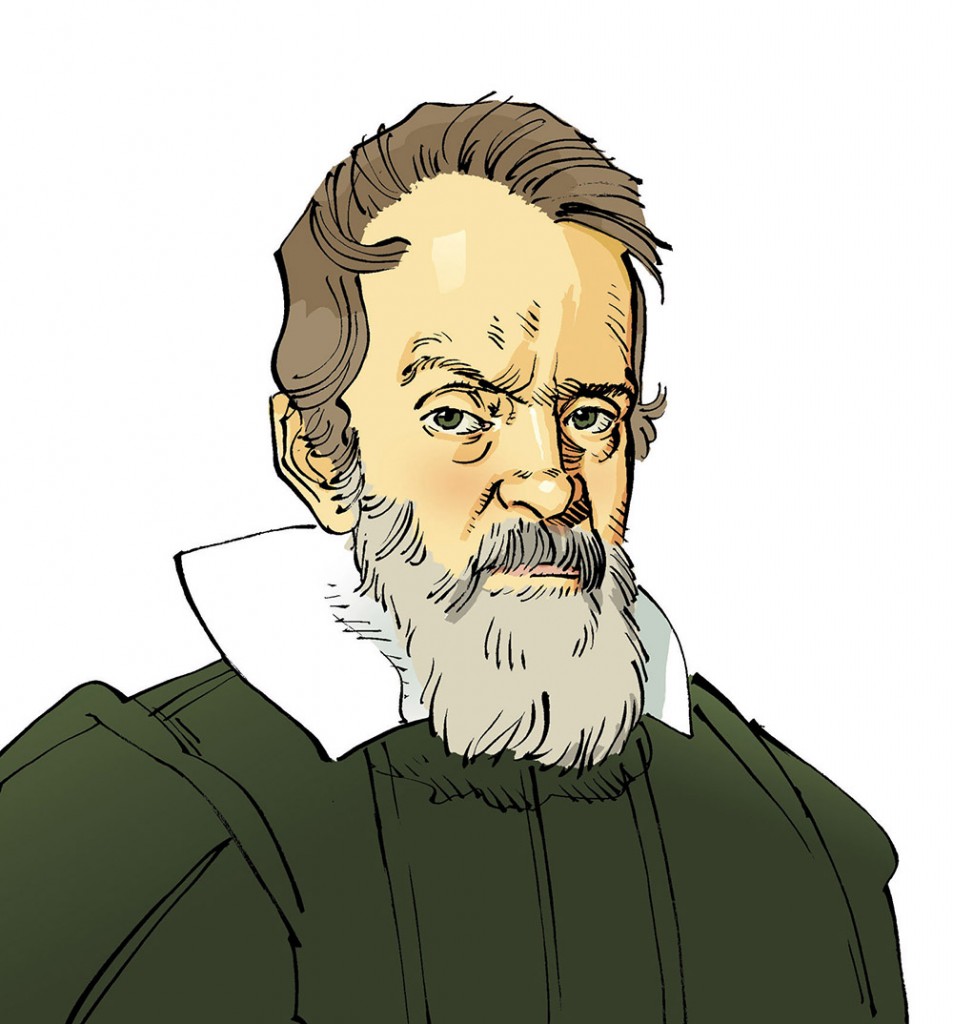 On January 7, 1610 Galileo Galilei observed four moons of Jupiter and was warned 400 years ago by the Catholic Church.
On January 7, 1610 Galileo Galilei observed four moons of Jupiter and was warned 400 years ago by the Catholic Church.
It was the spring of 1609, when Galileo Galilei (1564-1642) heard that a Dutchman had invented an instrument that allowed him to see objects far away as if they were close.
He only learned that this instrument consisted of a tube with a lens at each end. Based on this fleeting information, Galileo successively builds and perfects instruments capable of approaching objects six times (6x), then 8x, then 20x, and finally 32x. Most important people are amazed, although some, suspicious, do not believe what they see.
In November 1609, Galileo began using his telescopes to observe the stars: he discovered that the Moon had craters and mountains; it perceives thousands of stars invisible to the naked eye; and the Milky Way dissolves into a multitude of stars, ceasing to be the hypothetical sublunar emanation that the Ancients supposed.
On January 7, 1610, he points the telescope at the planet Jupiter and concludes, after comparing successive observations, that four small moons revolve around this planet, just as our Moon revolves around the Earth.
Galileo concludes that there may be centers of movement other than the Earth. Enthusiastic, he published, in March 1610, the book Sidereus nuncius (The Celestial Messenger), where he describes the wonders he had observed in the skies, but with that he began to be the target of controversy and to create enemies.
For these successes, he was appointed, still in 1610, First Mathematician and Philosopher at the court of Cosimo II of Medicis, Grand Duke of Tuscany and ruler of Florence.
At the end of this year, he discovers that the planet Venus goes through a complete cycle of phases, like the Moon, which is only possible if Venus orbits the Sun, in possible conformity with the heliocentric model and in total contradiction to the geocentric model.
In July 1610, he discovers that Saturn has “protrusions”, one on each side, almost catching a glimpse of the rings we know today on that planet.
Between 1612 and 1613, he observes the Sun by projection, detects spots on its surface and verifies that these spots gradually circle our star, discovering its rotational movement.
It is clear that all these discoveries, contrary to the assumptions of the time, based on immediate appearances or on ancient texts disconnected from observation, displeased the Catholic Church, a great defender of geocentrism. This resulted in enmities coming from the more conservative factions of the Clergy and even from some scholars who contested it.
On February 26, 1616 (almost 400 years ago), Galileo was called to Rome, by order of Pope Paul V. Received by Cardinal Roberto Belarmino (1542-1621), he warned him of several essential questions: 1- says- to you that the claim that the Sun is the immobile center of the Universe is heresy; 2- point out that the statement that the Earth moves is theologically wrong; 3- forbids him to speak of heliocentrism as a physical reality, but authorizes him to refer to it only as a mathematical hypothesis.
Galileo restrains himself for some time, but in 1632 he publishes the Dialogue on the Two Main World Systems, where he compares the geocentric (Ptolemy) and heliocentric (Copernicus) systems.
The Pope at that time, Urban VIII, had authorized him to write such a book, as long as he spoke of the two systems without taking sides with the heliocentric and assuming this as a mere hypothesis. However, the Pope, formerly a friend and admirer of the Italian sage, considers that Galileo has not fulfilled his promise and feels ridiculed in a character in the book, which is banned in the summer of 1632.
In 1633, aged 69, Galileo is called to Rome, under threat of being chained if he refuses. After many and extensive interrogations, and after being shown the instruments of torture of the Inquisition, he is forced to deny his convictions.
He is neither burned alive nor tortured, due to the Pope's appreciation and the influence of powerful friends. He is sentenced to life imprisonment, then commuted to prison at his home in Arcetri, on the outskirts of Florence. Always closely watched by the officers of the Inquisition.
Despite being prohibited from writing, Galileo resumed his investigations and, in 1636, he had a new book, entitled Discourse on Two New Sciences, in which he laid the foundations of the resistance of materials and dynamics, an area of Physics that would later serve as inspiration to the great Isaac Newton. The manuscript had to be taken secretly from Italy to Holland, where it was printed.
Galileo was totally blind in 1637 due to eye infections, and in 1638 he received the book already printed. On January 8, 1642, “he gave his soul to the Creator with philosophical and Christian firmness”, according to Vincenzo Viviani, his last disciple and first biographer.
Galileo's work marked the dawn of modern science and a new attitude towards scientific work. And his life was an example of persistence and dedication.
To know more: http://www.platanoeditora.pt/?q=C/BOOKSSHOW/2117
Text by Guilherme de Almeida
Picture: jorge miguel
Science in the Regional Press – Ciência Viva
Guilherme de Almeida (b. 1950) has a degree in Physics from the Faculty of Sciences of Lisbon and was a professor of this subject, having included Astronomy in his university education.
He has given over 90 lectures on Astronomy, Astronomical Observations and Physics, has published over 100 articles and is a certified trainer in these subjects.
He is the author of eight books on Astronomy, Astronomical Observations and Physics. Some of his works are also published in English, Castilian and Catalan.
More information at http://www.wook.pt/authors/detail/id/5235


















Comments